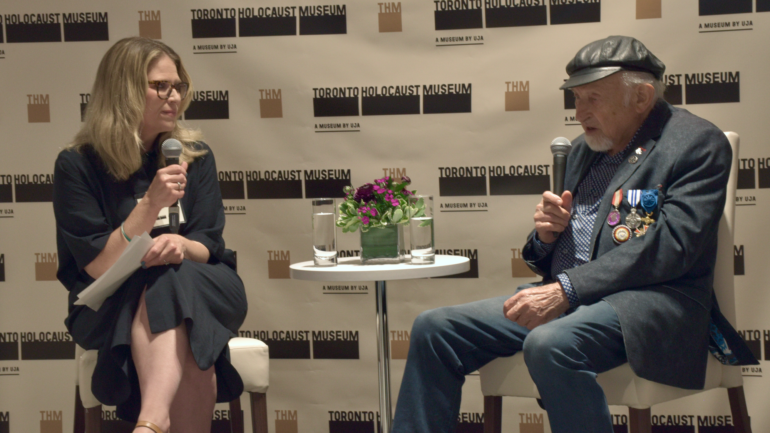At the age of 11, Nate Leipciger’s childhood ended when the Second World War began as the Nazis invaded his Polish homeland. Four years later he was separated from his mother and sister, sent to Auschwitz concentration camp with his father.
A Holocaust survivor, Leipciger said Jews had to fight for their humanness while in the concentration camp.
“We washed when they didn’t provide proper facilities. We laundered our underwear and our clothes when they didn’t provide us with soap and water,” he said.
“We had to do it in order to maintain our humanness, not to be beaten up by lies.”
Leipciger, now 95 and a resident of North York, remains an active educator who shares his story and teaches younger generations the history of the Holocaust.
He and his father Jacob survived the horror, but his sister Linka and his mother Leah did not.
His testimony and the legacies of many Holocaust survivors in Toronto are now extended through the new Holocaust Museum in North York.
Toronto Holocaust Museum, the first and only museum in Toronto dedicated to Holocaust remembrance and education, is now open to the public.
The museum seeks to preserve the testimonies of Toronto Holocaust survivors for future generations.
Dara Solomon, the executive director of the museum, said between 1947 and 1955, there were approximately 35,000 survivors together with their children arriving in Canada.
“For over 40 years, survivors have been sharing with students and the public, their testimonies, stories of tremendous loss and trauma, but also stories of resiliency and renewal,” Solomon said.
“And sadly, we’re approaching the end of this era,” she said.
Solomon said to keep the stories alive, the museum has curated more than 220 minutes of remembrances from 70 survivors who came to Canada after the war, specifically to Toronto.
The museum has four galleries, each with photographs, artifacts and contents that share the narrative of the Holocaust from the early years of persecution in the 1930s, the genocide and to the survivors’ new lives in Canada.
There are 11 testimony stations with large interactive panels where visitors can watch the testimonies of survivors.
Using the museum’s tablets, visitors can also follow the journey of a survivor throughout the war through augmented reality.
Solomon said the museum creates an immersive technological experience to powerfully present survivors’ testimonies even after they are gone so their stories can continue to impact young visitors.
“I think it’s important for the community who are getting further and further away from that,” she said. “Soon, nobody’s going to have a grandparent that survived the Holocaust.”
Solomon said it is important to study the history of the Holocaust, so people do not repeat the past.
Leipciger said his heart grew when he saw his portrait in the museum because he knew after his death, people will continue learning about his story.
“It’s what the museum has done. It has extended our legacy, our tribulations, our fight for survival, our fight for a new life in a new country,” he said.
“For our fight to raise children so that they should not be traumatized with what we went through,” Leipciger said.



